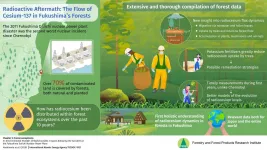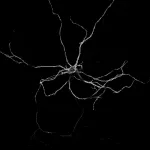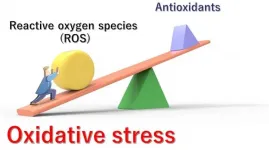Blink! The link between aerobic fitness and cognition
Researchers from the University of Tsukuba find that spontaneous eye blink activity explains the link between physical activity and cognitive function
2021-02-03
(Press-News.org) Tsukuba, Japan - Although exercise is known to enhance cognitive function and improve mental health, the neurological mechanisms of this link are unknown. Now, researchers from Japan have found evidence of the missing link between aerobic fitness and cognitive function.
In a study published in Medicine & Science in Sports & Exercise, researchers from the University of Tsukuba revealed that spontaneous eye blink rate (sEBR), which reflects activity of the dopamine system, could be used to understand the connection between cognitive function and aerobic fitness.
The dopaminergic system is known to be involved in physical activity and exercise, and previous researchers have proposed that exercise-induced changes in cognitive function might be mediated by activity in the dopaminergic system. However, a marker of activity in this system was needed to test this hypothesis, something the researchers at the University of Tsukuba aimed to address.
"The dopaminergic system is associated with both executive function and motivated behavior, including physical activity," says first author of the study Ryuta Kuwamizu. "We used sEBR as a non-invasive measure of dopaminergic system function to test whether it could be the missing link between aerobic fitness and cognitive function."
To do this, the researchers asked healthy participants to undergo a measure of sEBR, a test of cognitive function, and an aerobic fitness test. They also measured brain activity during the cognitive task using functional near-infrared spectroscopy.
"As expected, we found significant correlations between aerobic fitness, cognitive function, and sEBR," explains Professor Hideaki Soya, senior author. "When we examined these relationships further, we found that the connection between higher aerobic fitness and enhanced cognitive function was mediated in part by dopaminergic regulation."
Furthermore, activity in the left dorsolateral prefrontal cortex (l-DLPFC) during the cognitive task was the same or lower in participants with higher sEBR compared with lower sEBR, even though those with higher sEBR appeared to have greater executive function, and thus higher neural efficiency.
"Although previous studies have indicated that aerobic fitness and cognitive function are correlated, this is the first to provide a neuromodulatory basis for this connection in humans. Our data indicate that dopamine has an essential role in linking aerobic fitness and cognition," says first author Kuwamizu.
Given that neural efficiency in the l-DLPFC is a known characteristic of the dopaminergic system that has been observed in individuals with higher fitness and executive function, it is possible that neural efficiency in this region partially mediates the association between aerobic fitness and executive function. Furthermore, physical inactivity may be related to dopaminergic dysfunction. This information provides new directions for research regarding how fitness affects the brain, which may lead to improved exercise regimens. For instance, exercise that specifically focuses on improving dopaminergic function may particularly boost motivation, mood, and mental function.
INFORMATION:
The article, "Spontaneous Eye Blink Rate Connects Missing Link between Aerobic Fitness and Cognition," was published in Medicine & Science in Sports & Exercise
(DOI: 10.1249/MSS.0000000000002590).
[Attachments] See images for this press release:

ELSE PRESS RELEASES FROM THIS DATE:
2021-02-03
After the Chernobyl disaster of 1986, the 2011 Fukushima Daiichi nuclear power plant (FDNPP) disaster was the second worst nuclear incident in history. Its consequences were tremendous for the Japanese people and now, almost a decade later, they can still be felt both there and in the rest of the world. One of the main consequences of the event is the release of large amounts of cesium-137 (137Cs)--a radioactive "isotope" of cesium--into the atmosphere, which spread farther away from the power plant through wind and rainfall.
Considering the massive threat posed by 137Cs to the health of both humans and ecosystems, it is essential to understand how it has distributed and how much of it still lingers. This is why the ...
2021-02-03
Tampa, FL (Feb. 3, 2021) -- A preclinical study by a END ...
2021-02-03
The coronavirus pandemic forced states across the nation to transform the way their residents voted in 2020, ramping up get-out-the-vote messaging and allowing for more people than ever to vote by mail.
But what's the best way to let residents know about new voting rules? And how much does something like voting by mail increase voter turnout overall?
Political scientists Daniel Hopkins and Marc Meredith looked at these questions during Philadelphia's 2020 primary, and worked with city officials to run an experiment to see whether an inexpensive postcard campaign about mail-in voting would be effective. They partnered with Anjali Chainani, Nathaniel Olin, and Tiffany ...
2021-02-03
It is important for patients to understand the information they need for making health decisions, yet studies have shown that a large segment of the population lacks the health literacy to do so. Health literacy refers to capacity of people to obtain, process, and understand health information needed for making health decisions. A researcher in the School of Information Sciences at the University of Illinois Urbana-Champaign is addressing this topic.
"Many people have inadequate health literacy to support them in understanding health information and/or performing basic self-care activities," said Assistant ...
2021-02-03
Key Takeaways:
Airbnb does have an impact on housing prices and rents.
Impact is stronger in areas with fewer owner-occupiers, such as vacation destination towns.
Airbnb contributes to an increase in the supply of short-term rentals, while decreasing the long-term supply of rentals.
CATONSVILLE, MD, February 2, 2021 - According to new research, the presence of an Airbnb property can actually contribute to an increase in housing prices and rental rates in a local neighborhood. But it depends on where the property is located.
The study sought to assess the impact of home-sharing on residential house prices and ...
2021-02-03
A type of novel molecular voltage sensor makes it possible to watch nerve cells at work. The principle of the method has been known for some time. However, researchers at the University of Bonn and the University of California in Los Angeles have now succeeded in significantly improving it. It allows the propagation of electrical signals in living nerve cells to be observed with high temporal and spatial resolution. This enables investigations into completely new questions that were previously closed to research. The study has now been published in the journal PNAS.
When we smell a bottle of suntan lotion, electrical pulses ...
2021-02-03
Hikers, soldiers and school children all know the burden of a heavy backpack. But now, researchers have developed a prototype that not only makes loads feel about 20% lighter, but also harvests energy from human movements to power small electronics. The new backpack, reported in ACS Nano, could be especially useful for athletes, explorers and disaster rescuers who work in remote areas without electricity, the researchers say.
Backpacks are widely used in everyday life for the hands-free carrying of loads. Over time, however, walking or running with a heavy sack can cause back and neck pain. Also, backpackers ...
2021-02-03
Environmentally conscious consumers try to "buy local" when food shopping. Now, a study of food raised around Chicago has shown that buying local can't provide all necessary nutrients for area residents, though it could fulfill their needs if some nutrients were supplied as supplements. The researchers report in ACS' Environmental Science & Technology that urban agriculture made little difference in reducing overall land area, and thus distance, required to supply all nutritional needs.
As the U.S. population continues to flow to urban regions, consumers are moving farther from farms and croplands. This limits nutrient recycling and drives up emissions associated with transporting ...
2021-02-03
Enveloped viruses have been detected in raw sewage and sludge, but scientists still don't fully understand the fate and infectivity of these viruses during water purification at treatment plants. Now, researchers reporting in ACS' Environmental Science & Technology have discovered that a standard water treatment technique, called iron (III) coagulation, and its electrically driven counterpart, iron (0) electrocoagulation, can efficiently remove and inactivate a model enveloped virus.
Enveloped viruses have an outer coating of lipids and proteins that helps protect their genetic material. Typically, disrupting this coat inactivates the virus. Until now, most studies have investigated ...
2021-02-03
Oxygen is essential for human life, but within the body, certain biological environmental conditions can transform oxygen into aggressively reactive molecules called reactive oxygen species (ROS), which can damage DNA, RNA, and proteins. Normally, the body relies on molecules called antioxidants to convert ROS into less dangerous chemical species through a process called reduction. But unhealthy lifestyles, various diseases, stress, and aging can all contribute to an imbalance between the production of ROS and the body's ability to reduce and eliminate them. The resulting excessive levels of ROS cause "oxidative stress," ...
LAST 30 PRESS RELEASES:
[Press-News.org] Blink! The link between aerobic fitness and cognition
Researchers from the University of Tsukuba find that spontaneous eye blink activity explains the link between physical activity and cognitive function







